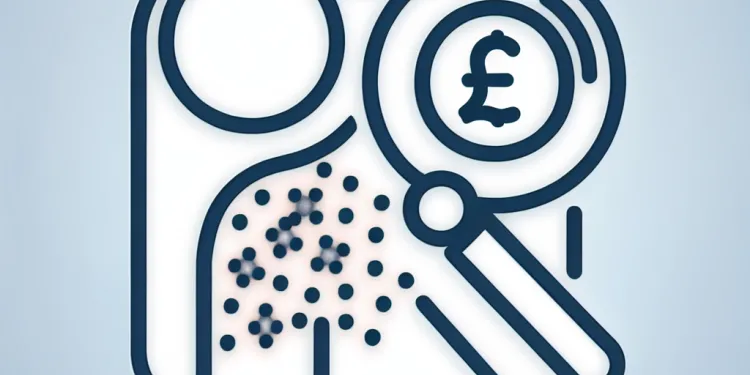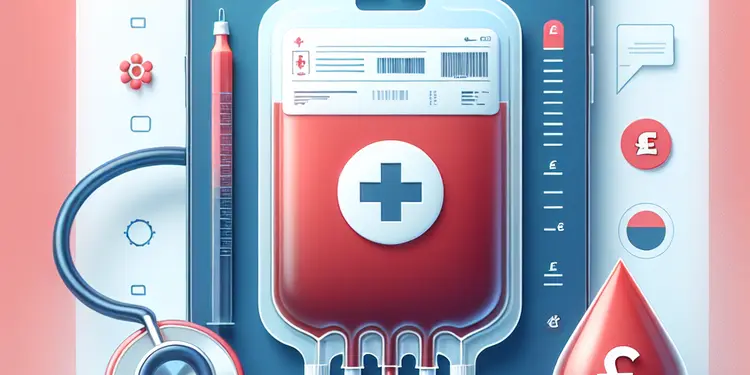Find Help
More Items From Ergsy search
-

2 episodes of cellulitis and been given antibiotics but the redness doesn't seem to be improving?
Relevance: 100%
-

What to do about red legs
Relevance: 60%
-

Antibiotics and You: An introduction to antibiotic resistant infections
Relevance: 38%
-

Is it dangerous driving to run a red light?
Relevance: 35%
-

Can appendicitis be treated with antibiotics?
Relevance: 34%
-

Can I take antibiotics for a cold?
Relevance: 34%
-

Why is antibiotic resistance a concern with gonorrhoea?
Relevance: 33%
-

Can antibiotics treat norovirus?
Relevance: 33%
-

What antibiotics are used to treat gonorrhoea?
Relevance: 32%
-

How effective are antibiotics in treating Lyme disease?
Relevance: 31%
-

Can the bubonic plague become resistant to antibiotics?
Relevance: 31%
-

Acute COPD in Adults: Antibiotics or not - Dr Nick Francis
Relevance: 31%
-

Efforts to Combat Antibiotic Resistance Gain Momentum with New Research Initiatives
Relevance: 29%
-

When should I seek medical help for impetigo?
Relevance: 28%
-

How is impetigo treated?
Relevance: 26%
-

Can impetigo become serious?
Relevance: 24%
-

Group A strep: North East GP tells you what you need to know
Relevance: 23%
-

GPs Warn Antibiotic Overuse Could Lead to Superbug Crisis
Relevance: 22%
-

What types of antibiotics are typically used to treat Lyme disease?
Relevance: 22%
-

Is impetigo painful?
Relevance: 20%
-

Can impetigo spread to other parts of my body?
Relevance: 17%
-

Minor ailment scheme - Impetigo
Relevance: 17%
-

How long does it take for impetigo to heal?
Relevance: 16%
-

Pharmacy First – Impetigo Service
Relevance: 16%
-

Is impetigo contagious?
Relevance: 15%
-

How can I prevent the spread of impetigo?
Relevance: 15%
-

MRSA Bug
Relevance: 14%
-

What is the treatment for bacterial meningitis?
Relevance: 14%
-

How to treat a dog bite
Relevance: 14%
-

What is Lyme Disease?
Relevance: 14%
-

How can I tell if I have impetigo?
Relevance: 14%
-

Is there a vaccine for impetigo?
Relevance: 14%
-

Can I get impetigo more than once?
Relevance: 14%
-

How can the bubonic plague be treated?
Relevance: 13%
-

Can bacterial infections be transmitted through blood transfusion?
Relevance: 13%
-

How to treat a cat bite
Relevance: 13%
-

Can Lyme disease be treated?
Relevance: 13%
-

How is sickle cell disease treated?
Relevance: 13%
-

Help with tonsillitis
Relevance: 12%
-

What causes nettle rash?
Relevance: 12%
Understanding Persistent Cellulitis and Antibiotic Effectiveness
What is Cellulitis?
Cellulitis is a common bacterial skin infection that typically affects the deeper layers of the skin and the subcutaneous tissues. It often manifests as a red, swollen area that is hot and tender to the touch. The condition usually affects the lower legs, but it can occur anywhere on the body. The primary bacteria responsible for cellulitis are Streptococcus and Staphylococcus.Typical Treatment with Antibiotics
In the United Kingdom, the standard treatment for cellulitis involves administering antibiotics, either orally for mild cases or intravenously for more severe cases. Common antibiotics prescribed include flucloxacillin, cephalexin, or clindamycin. Usually, patients see an improvement in symptoms within a few days of starting antibiotics. The total antibiotic course typically lasts from 5 to 14 days, depending on the severity and the patient's response to the treatment.Why Might Cellulitis Redness Not Improve?
Persistent redness in cellulitis despite antibiotic treatment can be concerning. Several factors could contribute to this issue: 1. **Incorrect Diagnosis**: Sometimes, what seems like cellulitis may actually be another condition such as deep vein thrombosis, contact dermatitis, or even chronic venous insufficiency, which requires a different treatment approach. 2. **Resistant Bacteria**: The bacteria causing the cellulitis might be resistant to the prescribed antibiotics. MRSA (Methicillin-resistant Staphylococcus aureus) is a known resistant strain that may cause standard treatments to fail. 3. **Inadequate Dosage or Duration**: The antibiotics dosage may not be strong enough, or the course may not be long enough to fully eradicate the infection. 4. **Underlying Conditions**: Patients with weakened immune systems or conditions like diabetes may find it harder for their bodies to respond to treatment quickly. 5. **Deep-seated Infections**: Sometimes, the infection could be more deeply rooted than initially thought, requiring more aggressive treatment or even surgical intervention to drain abscesses or remove infected tissue.When to Seek Further Medical Advice
If you have been treated for cellulitis with antibiotics and see no improvement, or if the symptoms are worsening, it is crucial to seek further medical advice. Immediate medical attention is necessary if you experience high fever, increased pain, spreading redness, or signs of systemic infection like chills and rapid heartbeat. In the UK, visiting your GP or contacting the NHS 111 service can provide additional guidance and support. They may recommend further diagnostic tests, a different antibiotic, or referral to a specialist for more intensive treatment.Conclusion
Persistent redness in cellulitis despite antibiotic treatment warrants further investigation to correctly diagnose and treat the condition. Always follow up with healthcare professionals if your symptoms do not improve, ensuring the best care and effective resolution of the infection.Understanding Long-lasting Cellulitis and How Antibiotics Work
What is Cellulitis?
Cellulitis is an infection on your skin caused by bacteria. It makes your skin red, swollen, hot, and sore. It usually happens on your lower legs, but can occur anywhere on the body. The germs that cause cellulitis are called Streptococcus and Staphylococcus.How Do We Treat Cellulitis?
In the UK, doctors give antibiotics to treat cellulitis. You take antibiotics as pills if it's not too bad, or through a drip in your arm if it's worse. Common antibiotics are flucloxacillin, cephalexin, or clindamycin. People usually start feeling better a few days after taking antibiotics. You need to take them for 5 to 14 days, depending on how bad it is.Why Doesn't Redness Go Away?
Sometimes, the redness from cellulitis doesn’t get better even after treatment. Here are some reasons why: 1. **Wrong Problem**: It might not be cellulitis. It could be something else, like a blood clot or a skin allergy, needing different treatment. 2. **Strong Germs**: The bacteria might not be affected by the antibiotics. Some strong germs, like MRSA, don’t get killed easily by usual treatments. 3. **Not Enough Medicine**: The amount of medicine might be too low, or not taken for long enough to kill the germs. 4. **Other Health Issues**: If you have a weak immune system or diabetes, it's harder for your body to fight infections. 5. **Deep Infection**: The infection might be deep in the skin and need stronger treatment or surgery to clean out the germs.When to Get More Help
If you’re taking antibiotics for cellulitis but not getting better, or if you’re getting worse, go back to the doctor. You need to get help quickly if you have a high fever, more pain, spreading redness, or if you feel very sick with chills and fast heartbeat. In the UK, see your GP or call NHS 111 for advice and support. They can do more tests, give different antibiotics, or send you to a specialist for better care.Conclusion
If cellulitis doesn’t get better with antibiotics, talk to a doctor to make sure you have the right treatment. Always check with healthcare professionals if the cellulitis isn’t improving, so you get the right care and get better quickly.Frequently Asked Questions
What is cellulitis?
Cellulitis is a common bacterial skin infection that typically causes redness, swelling, and warmth in the affected area, often the legs.
What causes cellulitis?
Cellulitis is usually caused by bacteria, most commonly streptococcus or staphylococcus, entering through a break or crack in the skin.
How is cellulitis diagnosed?
A healthcare provider will diagnose cellulitis based on your medical history, symptoms, and a physical examination. They may also take a sample of the affected area or perform blood tests.
Why isn't my cellulitis improving after antibiotics?
There can be several reasons, such as antibiotic resistance, improper dosage, or an incorrect diagnosis. You should consult your healthcare provider if you do not see any improvement.
What should I do if the redness from cellulitis doesn't improve after antibiotics?
Seek medical advice from your healthcare provider. They may need to adjust your medication or investigate other potential causes.
How long does it typically take for cellulitis to improve with antibiotics?
You may start to see improvement within a few days of starting antibiotics, but it can take 7-10 days or longer for full recovery. If there is no improvement, consult your healthcare provider.
Can cellulitis be treated at home?
While mild cases of cellulitis can sometimes be managed at home, medical evaluation and prescription antibiotics are generally necessary. Severe cases may require hospitalisation.
What are the signs that cellulitis is getting worse?
Signs include increasing redness, swelling, pain, fever, and red streaks extending from the area. Seek medical attention immediately if you notice any of these symptoms.
Can cellulitis spread to other parts of the body?
Yes, untreated or severe cellulitis can spread to other parts of the body, including the bloodstream (sepsis), which is a medical emergency.
What lifestyle changes can help prevent cellulitis?
Keeping your skin clean and moisturized, treating wounds promptly, and managing conditions like diabetes and obesity can help prevent cellulitis.
Is cellulitis contagious?
No, cellulitis itself is not contagious. You cannot catch cellulitis from someone else, but the bacteria that cause it can spread through direct contact.
What complications can arise from cellulitis?
Potential complications include abscess formation, lymphangitis, chronic swelling, deep infection (such as osteomyelitis), and sepsis.
Can I exercise if I have cellulitis?
It is generally advised to rest the affected area and avoid strenuous activities until the infection has significantly improved. Your healthcare provider can give you specific advice.
Should I elevate the affected limb if I have cellulitis?
Yes, elevating the affected limb can help reduce swelling and discomfort. Keep the area elevated above heart level as much as possible.
When should I return to the GP for cellulitis?
You should return to your GP if you do not see improvement within a few days of starting antibiotics, if your symptoms worsen, or if you develop new symptoms like fever or increased pain.
What is cellulitis?
Cellulitis is a skin infection. It makes the skin red, hot, and swollen. It can be painful too. If you have cellulitis, you should see a doctor. They can help you get better.
If reading is hard, you can ask someone to read this to you. You can also use a magnifying tool to make words bigger. Listening to audiobooks can also help you understand better.
Cellulitis is a skin infection. It is caused by bacteria. It usually makes the skin red, swollen, and warm. This often happens on the legs.
Why do people get cellulitis?
Cellulitis is when your skin gets infected and sore. Germs can get in through a cut or scrape. These germs cause the skin to be red, hot, and swollen.
If you have a cut, make sure to clean it and cover it with a bandage. This can help stop the germs from getting in.
You can ask someone to help you clean cuts or scrapes. There are also videos and pictures online that show how to do it.
Cellulitis happens when germs get into your skin. This usually happens through a cut or crack. The germs that cause cellulitis are often called streptococcus or staphylococcus.
Here are some things that can help you understand better:
- Look at pictures of skin cuts and cracks to see what they look like.
- Use a dictionary for words you don't know. You can also ask someone to help explain.
How do doctors find out if you have cellulitis?
Doctors can tell if you have cellulitis by looking at your skin. They will look at the red and swollen areas. Doctors might ask you questions about your health. Sometimes, they may need a blood test.
Supportive tools can help you. You can use simple drawings or pictures. They help you understand what doctors do. It might also help to have someone with you who can help you ask questions.
A doctor will find out if you have cellulitis by asking about your health, looking at your symptoms, and examining your body. They might also take a small sample from the sore area or do a blood test.
Why am I still sick after taking medicine for my skin infection?
There can be different reasons, like the medicine not working, taking the wrong amount of medicine, or having the wrong illness. If you are not getting better, talk to your doctor.
What can I do if my skin is still red after taking medicine for cellulitis?
Talk to your doctor. They might need to change your medicine or find out if something else is causing the problem.
How long does it take for cellulitis to get better with medicine?
When you take antibiotics, you might start to feel better in a few days. But sometimes it takes a week or more to get all better. If you do not feel better, talk to your doctor.
Can you treat cellulitis at home?
If you have a little bit of cellulitis, you might be able to care for it at home. But, it's usually important to see a doctor and get medicines from them. If it gets really bad, you might need to go to the hospital.
You can try using pictures or videos to understand better. Talking to someone you trust can also help.
How can you tell if cellulitis is getting worse?
Look for these signs:
- The skin is more red and swollen.
- The area is getting bigger.
- There is more pain.
- You have a fever.
- You feel very tired.
You can use tools to help read, like a dictionary or text-to-speech software.
Look out for these signs: more redness, swelling, or pain. You might also get a fever or see red lines going away from the spot. Go to the doctor right away if you see any of these things.
Can cellulitis move to other parts of the body?
Yes, cellulitis can spread to other places on your body.
Cellulitis is an infection of the skin. It happens when germs get into a cut or a scrape.
If you think you have cellulitis, it’s important to see a doctor. They can help you get better.
Here are some tips to help you:
- Talk to a doctor if your skin is red, hot, and swollen.
- Keep cuts and scrapes clean to stop germs from getting in.
- Watch for changes in your skin and tell an adult if you notice anything.
Yes, if cellulitis is not treated or is very bad, it can spread to other parts of the body. It can even get into the blood, which is very dangerous and needs a doctor right away.
How can you change your daily habits to stop cellulitis?
Keep your skin clean. Put cream on your skin to keep it soft. If you get a cut or scratch, clean it and cover it right away. Take care of your health if you have diabetes or if you are overweight. These things can help stop skin infections called cellulitis.
Can you catch cellulitis from someone else?
No, you cannot catch cellulitis from another person. But the germs that cause it can spread if you touch them.
What problems can happen with cellulitis?
Cellulitis is a skin infection. It can cause problems if not treated.
Here are some problems that could happen:
- Blood infection: The germs can get into the blood. This can make you very sick.
- Pus collection: Pus can build up under the skin and make a lump. This may need to be drained by a doctor.
- Swelling: The area may stay swollen for a long time.
If you have cellulitis, it is important to see a doctor. They can give you medicine to make it better.
Pictures and videos can help you understand more about cellulitis. You can also ask someone to read this to you.
Some problems that can happen are:
- A lump filled with pus, called an abscess.
- Swollen and painful lymph nodes, called lymphangitis.
- Swelling that doesn't go away.
- A deep infection in the bone.
- A serious infection throughout the body, called sepsis.
To help understand these words, you can look them up in a dictionary or use a computer tool to read them aloud. You can also ask someone to explain them to you.
Can I exercise if I have cellulitis?
Do you have cellulitis? It is a skin problem. Is it okay to exercise? Here are some things to think about:
- Talk to your doctor. They can tell you what is best.
- If you feel sick or have pain, do not exercise.
- Walking slow or moving gently is usually okay. Listen to your body.
- Rest is important. Do not do too much.
Ask for help if you need it. You can use tools like pictures or videos. They might make it easier to understand.
It is important to rest the area that is hurt. Do not do any hard or difficult activities until the infection gets a lot better. Your doctor can tell you what to do exactly.
Should I raise my arm or leg if I have cellulitis?
If you have cellulitis, it is good to raise the area that is hurt. This may help you feel better.
Ways to help:
- Lift your arm or leg up on a pillow.
- Try to keep it higher than your heart.
- Ask someone to help you if it is hard to do alone.
If you need more help, talk to a doctor or a nurse.
Yes, raising the hurt arm or leg can help it feel better and less swollen. Try to keep it up higher than your heart when you can.
When should I see the doctor again for cellulitis?
If you have cellulitis, it's important to see the doctor again if:
- The redness and swelling get worse.
- You get a fever or feel very hot.
- The area is very painful.
- You notice red lines on your skin.
- You feel very unwell or tired.
Talk to someone you trust if you are worried. You can also write down your symptoms to show the doctor.
Go back to your doctor if you don't feel better after a few days of taking medicine. Go back if you feel worse or get new problems, like a fever or more pain.
Useful Links
- Ergsy carfully checks the information in the videos we provide here.
- Videos shown by Youtube after a video has completed, have NOT been reviewed by ERGSY.
- To view, click the arrow in centre of video.
- Most of the videos you find here will have subtitles and/or closed captions available.
- You may need to turn these on, and choose your preferred language.
- Go to the video you'd like to watch.
- If closed captions (CC) are available, settings will be visible on the bottom right of the video player.
- To turn on Captions, click settings .
- To turn off Captions, click settings again.
More Items From Ergsy search
-

2 episodes of cellulitis and been given antibiotics but the redness doesn't seem to be improving?
Relevance: 100%
-

What to do about red legs
Relevance: 60%
-

Antibiotics and You: An introduction to antibiotic resistant infections
Relevance: 38%
-

Is it dangerous driving to run a red light?
Relevance: 35%
-

Can appendicitis be treated with antibiotics?
Relevance: 34%
-

Can I take antibiotics for a cold?
Relevance: 34%
-

Why is antibiotic resistance a concern with gonorrhoea?
Relevance: 33%
-

Can antibiotics treat norovirus?
Relevance: 33%
-

What antibiotics are used to treat gonorrhoea?
Relevance: 32%
-

How effective are antibiotics in treating Lyme disease?
Relevance: 31%
-

Can the bubonic plague become resistant to antibiotics?
Relevance: 31%
-

Acute COPD in Adults: Antibiotics or not - Dr Nick Francis
Relevance: 31%
-

Efforts to Combat Antibiotic Resistance Gain Momentum with New Research Initiatives
Relevance: 29%
-

When should I seek medical help for impetigo?
Relevance: 28%
-

How is impetigo treated?
Relevance: 26%
-

Can impetigo become serious?
Relevance: 24%
-

Group A strep: North East GP tells you what you need to know
Relevance: 23%
-

GPs Warn Antibiotic Overuse Could Lead to Superbug Crisis
Relevance: 22%
-

What types of antibiotics are typically used to treat Lyme disease?
Relevance: 22%
-

Is impetigo painful?
Relevance: 20%
-

Can impetigo spread to other parts of my body?
Relevance: 17%
-

Minor ailment scheme - Impetigo
Relevance: 17%
-

How long does it take for impetigo to heal?
Relevance: 16%
-

Pharmacy First – Impetigo Service
Relevance: 16%
-

Is impetigo contagious?
Relevance: 15%
-

How can I prevent the spread of impetigo?
Relevance: 15%
-

MRSA Bug
Relevance: 14%
-

What is the treatment for bacterial meningitis?
Relevance: 14%
-

How to treat a dog bite
Relevance: 14%
-

What is Lyme Disease?
Relevance: 14%
-

How can I tell if I have impetigo?
Relevance: 14%
-

Is there a vaccine for impetigo?
Relevance: 14%
-

Can I get impetigo more than once?
Relevance: 14%
-

How can the bubonic plague be treated?
Relevance: 13%
-

Can bacterial infections be transmitted through blood transfusion?
Relevance: 13%
-

How to treat a cat bite
Relevance: 13%
-

Can Lyme disease be treated?
Relevance: 13%
-

How is sickle cell disease treated?
Relevance: 13%
-

Help with tonsillitis
Relevance: 12%
-

What causes nettle rash?
Relevance: 12%


